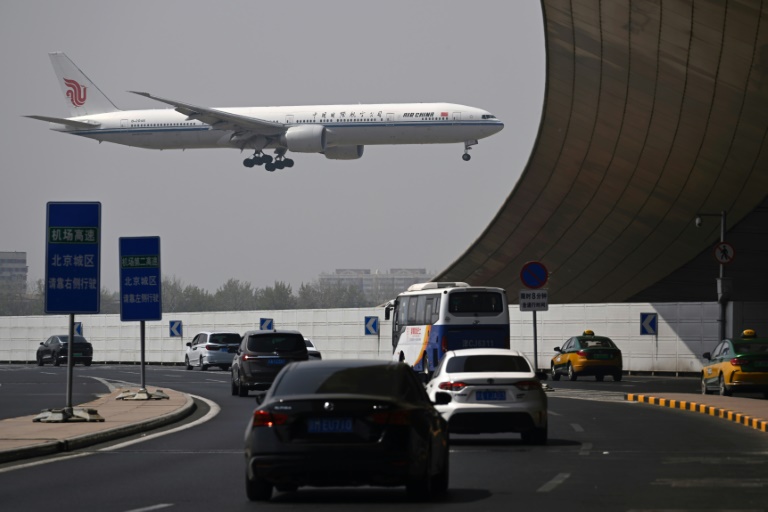U.S. President Donald Trump talks with members of the press in the Oval Office after signing an executive order adding 25-per-cent tariffs on imported automobiles and parts on Mar.
26 in Washington, DC. Win McNamee/Getty Images Donald Trump has a poker tell. He comes right out and tells everyone what he wants, and why.

Again and again. And again. The U.
S. President’s tell was on full display on Wednesday. Announcing 25-per-cent tariffs on imported automobiles and parts, Mr.
Trump said this marked “the beginning of ‘liberation day’ in America.” He promised, for the umpteenth time, that “we’re going to take back just some of the money that has been taken from us,” and “we’re going to charge countries for doing business in our country, and taking our jobs, taking our wealth. Taking a lot of things that they’ve been taking over the years.
They’ve taken so much out of our country. Friend and foe alike – and, frankly, friend has been oftentimes much worse than foe.” Mr.
Trump’s decisions tend to be impulsive. Wednesday’s announcement blindsided Canada, not to mention the auto industry. And as happens often with this administration, Mr.
Trump announced something whose details are still to be worked out. Ontario Premier Doug Ford said that U.S.
Secretary of Commerce Howard Lutnick told him Canada will receive at least a partial exemption from the auto tariffs, though who knows if that’s what’s going to happen. In any case, a whole other set of unspecified tariffs is set to be announced next week. So, depending on when you’re reading this, what will be tariffed, at what rate and on what date may have changed.
Or not. German automakers have the most to lose as Trump tariffs hit. Their share prices say as much Mr.
Trump’s tactics are mercurial. His strategy is incoherent. But his goals? His goals – his wishes – are crystal clear.
We know what the President wants with tariffs. He may not be able to do it – markets may crater, voters may scream, polls may nosedive. But that doesn’t change the fact that he wants it.
He really, really wants it. What is “it”? Mr. Trump has said time and again that he wants manufacturing industries – above all car manufacturing – to move to the United States.
He says, ad nauseam, that tariffs will make it happen. And while it was long assumed that his main target would be China , he’s spent the past couple of months telling the world that his beef is with erstwhile friends. The “liberation day” of April 2 is now mostly about freeing the U.
S. from “nasty” allies. Canada is at the top of the hit list.
Canada’s response has been the right one: hit back with tariffs of our own. Canada is escalating, to push the other side to de-escalate. The rhetorical target is Mr.
Trump, but the economic targets, regrettably but necessarily, are American businesses, voters and politicians. Canadian retaliation aims to give Americans a painful shock, to push them to demand that Mr. Trump reverse course.
It’s about saving free trade, including the integrated continental auto industry. Today, no vehicle is purely American or Mexican or Canadian. All are products of a supply chain of parts and labour snaking through all three countries.
To try to preserve that status quo, Canada has to hit back hard. Americans elected Mr. Trump on promises of lower prices and a better economy, not the opposite.
Nobody signed up for a trade war against Canada. But if Mr. Trump gets his wish, and tariff walls become permanent fixtures, then it’s Canada that will have to change course.
The integrated continental auto industry will be disintegrated. And Canada-U.S.
free trade will be over. If that’s where this is going – and Mr. Trump never stops telling us it’s where he wants to go – then Canada will have to drop the short-term strategy of trying to save the status quo with retaliatory tariffs.
We’ll have to recognize that U.S. tariff walls are here to stay, and adjust.
On Thursday, Liberal Leader Mark Carney went further than any Canadian official has in saying publicly that this future may now be our presen t. “The old relationship we had with the United States,” he said, “based on deepening integration of our economies and tight security and military co-operation, is over.” A couple of generations ago, manufacturers of everything from widgets to packaged foods had U.
S. factories for the U.S.
market, and Canadian factories for the Canadian market. Why? Trade barriers. Free trade replaced that with operations serving the whole continent.
The only things standing between us and a trip through the time machine are American voters and American businesses. Only they can force Mr. Trump to give up on his wish.
If not, we need to start preparing our economy for a future that could look a lot like the past..
Business

What does Donald Trump want with tariffs? He’s made that very clear

Trump has made no secret of his desire to see car manufacturing move to the United States














